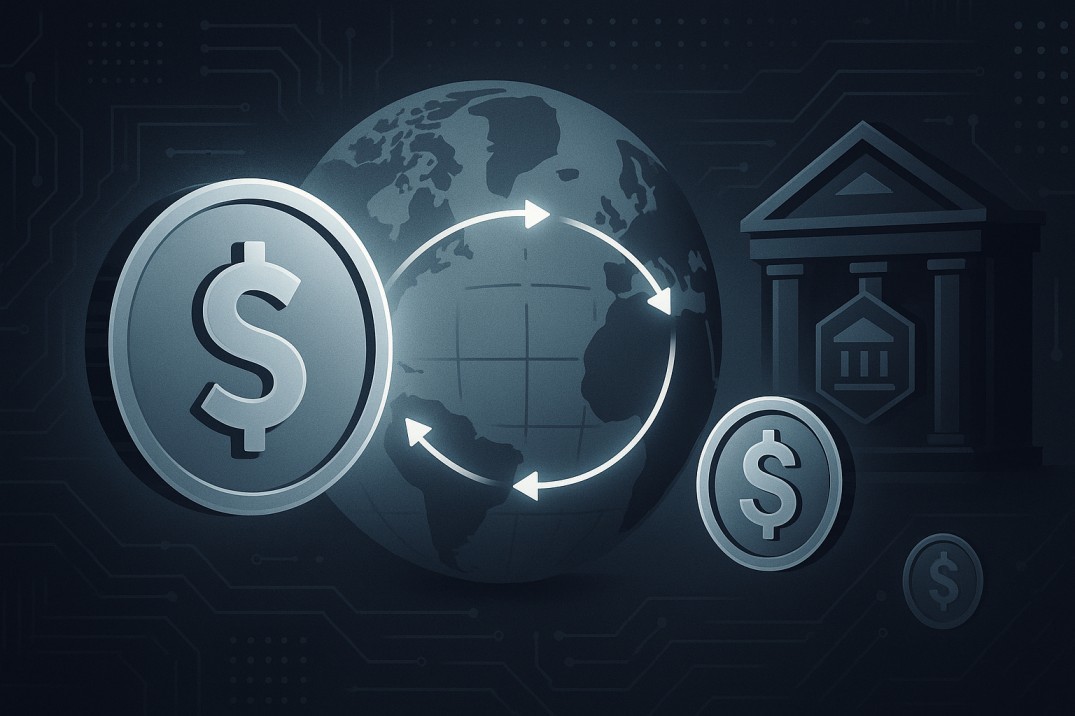TL;DR
- Investment firm William Blair predicts that stablecoins will overhaul traditional B2B cross-border payment infrastructure.
- The report argues stablecoins offer 24/7 settlement, lower cost, fewer intermediaries, and reduced FX risk compared to legacy correspondent banking.
- Blair sees Circle (USDC issuer) and Coinbase as likely winners in this transition.
- Legacy correspondent banks could be sidelined, with most economic value shifting toward newer entrants building on digital rails.
According to a new report from William Blair, stablecoins may not just complement the current financial system-they could replace some of its foundational rails. The firm frames them as a "major technology upgrade" over legacy cross-border payment systems, particularly in business-to-business settings.
Where traditional payments are often described as slow, expensive, and fragmented, stablecoins provide serious advantages: always-on settlement, minimal middlemen, instant or near-instant transfers, and reduced foreign-exchange exposure. These features make stablecoins especially attractive when sending value across borders.
Moreover, stablecoin transactions carry benefits enabled by blockchain: immutability, programmable or automated execution (via smart contracts), and transparent linking to trusted fiat currencies (like the U.S. dollar). Blair also points out that clearer regulation-such as U.S. laws like the GENIUS Act-could create a favorable environment for stablecoin-driven payment adoption.
Who Stands to Gain-and Who Might Lose
In the report, William Blair argues that the stablecoin space will likely consolidate around a handful of dominant tokens. Liquidity, network effects, and interoperability will push usage toward the major players.
This is key to Blair's bullish positioning on Circle (issuer of USDC) and Coinbase. Because USDC already has broad adoption and a regulated stance, Blair sees Circle as uniquely positioned to capture much of the value unlocked by a stablecoin-based payments world. Coinbase, as a major exchange and on-ramp/off-ramp hub, is also seen as benefiting significantly from deeper stablecoin usage. Other players that Blair mentions as potential beneficiaries include Visa, Mastercard, Corpay, Block (XYZ), and Fiserv, particularly as they integrate stablecoin rails into their services.
By contrast, correspondent banks-which currently act as intermediary bridges for cross-border payments-are presented as facing a challenging future. Even if these institutions adopt stablecoin rails, Blair suggests they might see far less of the upside than newer, digital-native players.
How Big Is the Payoff?

Blair's estimates place the addressable market for cross-border business payments at roughly $20 trillion, giving stablecoin infrastructure a massive potential runway for growth. Part of Blair's thesis is that stablecoins could cut international transaction costs by large margins-since many of the current costs come from intermediaries, legacy rails, currency conversion, compliance overhead, and latency.
If a stablecoin (or small group of them) becomes dominant in global payments, interest on reserves, transaction fees, and infrastructure services could translate into substantial revenue for issuers and platforms.
Challenges Before Full Disruption
The vision Blair outlines is bold-but not without obstacles. Several challenges must be navigated:
- Regulatory certainty: While the GENIUS Act is a step forward, global standards and trust frameworks must align for cross-border usage.
- On-chain liquidity & interoperability: Stablecoin rails must connect smoothly across blockchains, settlement systems, and legacy banking infrastructure.
- Risk & stability: Issuers must manage collateral, reserves, and redemption mechanisms without failures or depegs.
- Adoption inertia: Corporations, banks, and legacy payment systems will resist change unless the incentives are overwhelming.
- Tech and compliance integration: KYC, AML, sanctions, token governance, and legal compliance must be baked into stablecoin rails.
Blair acknowledges some of these in his report, calling legislative progress alone insufficient-real adoption will depend on infrastructure, corporate demand, and integration by large incumbents.
Final Thought
William Blair's report frames stablecoins not as a niche crypto innovation but as a potential backbone of the next-generation payments system. The shift he describes is not incremental-it's structural. Those who establish position early (Circle, Coinbase, and infrastructure layers) may capture outsized gains.
For correspondent banks and legacy institutions, adaptation is urgent-those that wait risk being relegated to peripheral roles. In an era of programmable money, financial value may increasingly accrue to those building the rails rather than those merely riding them.
Read More : COTI V2 Unpacked: A Straightforward Overview











